Monday, September 30, 2024
DO YOU KNOW
Sunday, September 29, 2024
DO YOU KNOW
Saturday, September 28, 2024
LAND OF RISING SUN
Japan


The Geographical Explanation: Japan is located in East Asia, and it’s one of the first places in the world to see the sunrise every day. If you look at a map, you’ll see that Japan is east of China and Korea, stretching out into the Pacific Ocean. Because of its position, the sun rises in Japan before it rises in many other parts of the world. This geographical fact is a big part of why Japan is called the “Land of the Rising Sun.”
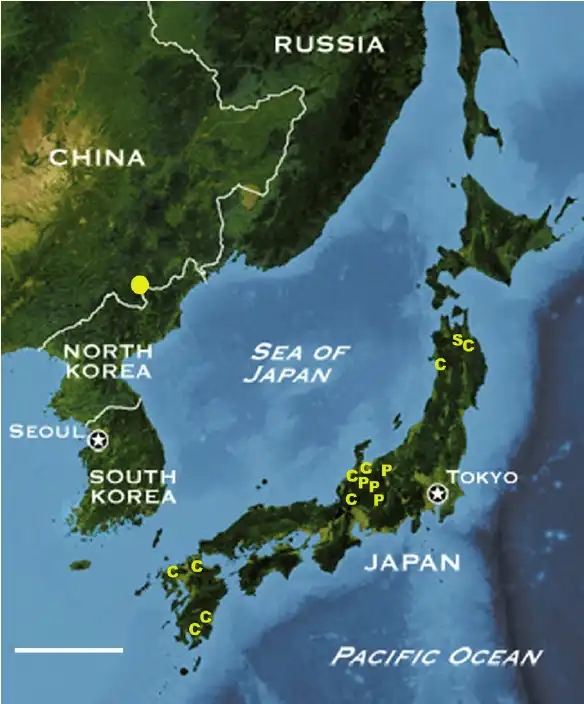
Historical Background: The name “Land of the Rising Sun” isn’t just about geography, though. It has deep historical roots. Long ago, China was a powerful and influential country in East Asia. The Chinese called Japan “Rìběn” (日本), which means “origin of the sun” or “sun’s origin,” because Japan is to the east of China, where the sun rises. Over time, this term evolved and spread, becoming a key part of how Japan is identified.

In the 8th century, Japanese emissaries to China started using the name “Nihon” or “Nippon” (日本) to describe their country. This name is still used today and directly translates to “origin of the sun,” reinforcing the idea of Japan as the place where the sun rises.
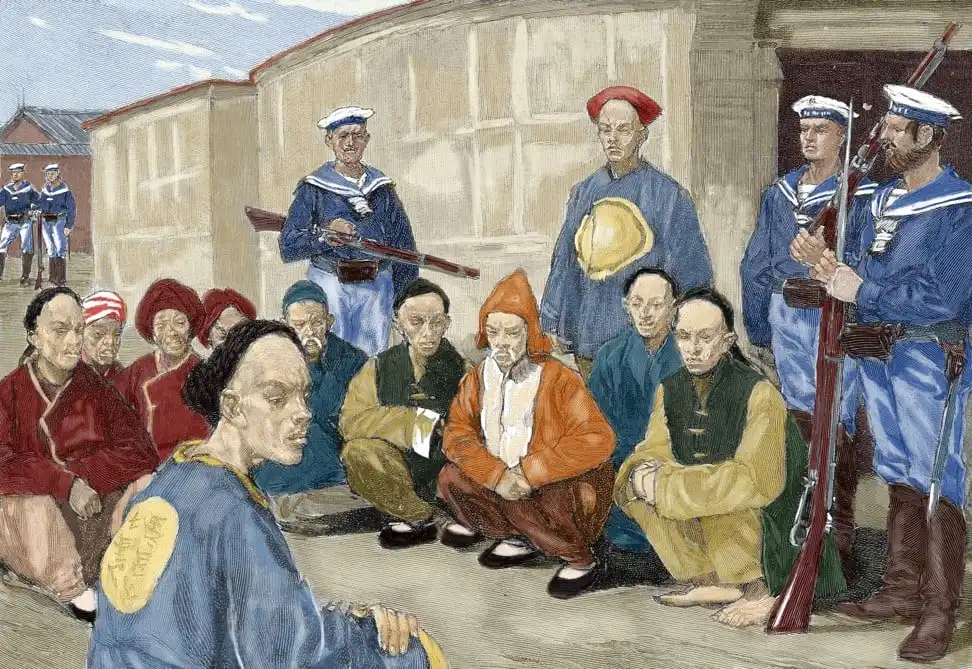
Cultural Significance: Japan’s association with the rising sun goes beyond geography and history; it is deeply embedded in its culture and national identity. The Japanese flag, known as the Nisshoki or Hinomaru, features a red circle in the centre, representing the sun. This simple yet powerful design symbolises the importance of the sun in Japanese culture.
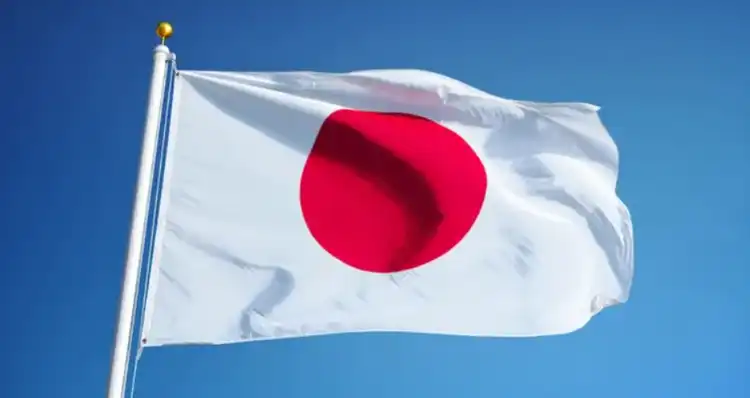
In Japanese mythology, the sun goddess Amaterasu is a central figure. She is considered the ancestor of the imperial family and one of the most important deities in Shinto, Japan’s indigenous religion. According to legend, Amaterasu brought light to the world, and her descendants became the rulers of Japan. This myth further ties Japan’s identity to the rising sun.
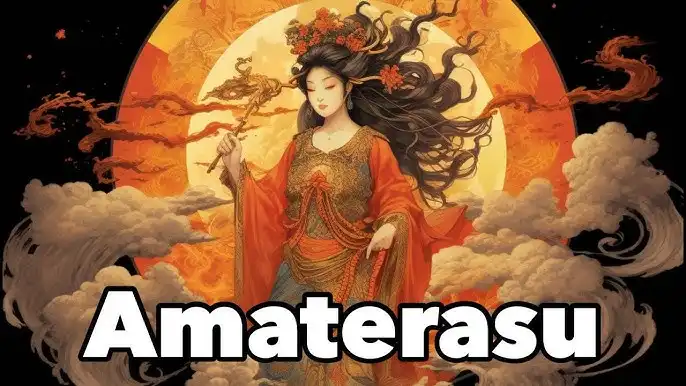
- The Modern Perspective: Today, the nickname “Land of the Rising Sun” continues to be a source of pride for the Japanese people. It symbolises Japan’s unique position in the world, its rich cultural heritage, and its forward-looking outlook. The rising sun represents hope, renewal, and a bright future, which are values that resonate deeply in Japanese society.
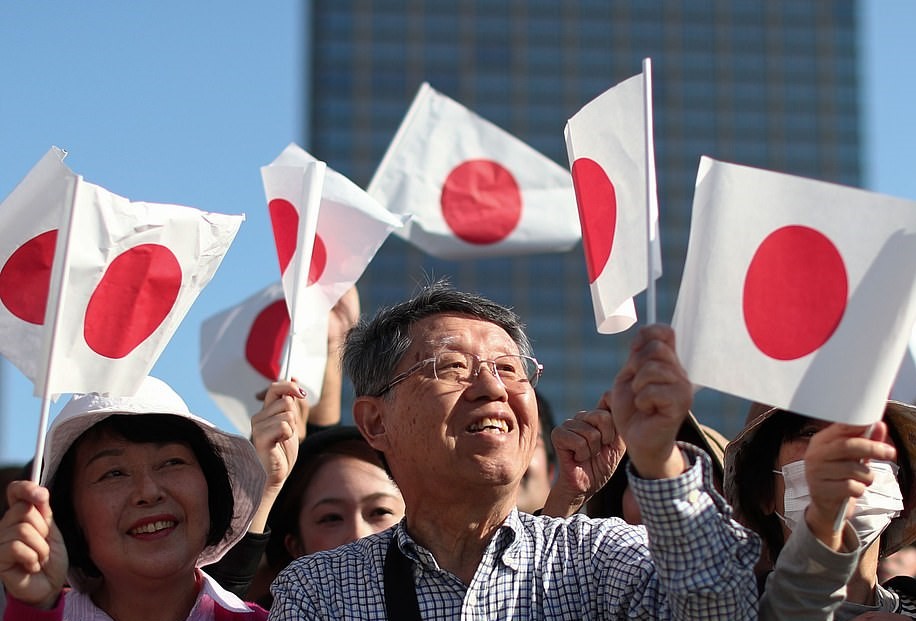
Fun Facts About Japan
Now that we know why Japan is called the “Land of the Rising Sun,” let’s explore some fun facts about this amazing country!
Mount Fuji: Japan is home to Mount Fuji, an iconic and sacred mountain that is also an active volcano. It is the highest peak in Japan and a popular destination for hikers and tourists.
 Cherry Blossoms: Every spring, Japan celebrates the cherry blossom season, known as “Sakura.” The blooming of cherry trees is a beautiful sight, attracting people from all over the world to witness the stunning pink and white flowers.
Cherry Blossoms: Every spring, Japan celebrates the cherry blossom season, known as “Sakura.” The blooming of cherry trees is a beautiful sight, attracting people from all over the world to witness the stunning pink and white flowers.
 Technology and Tradition: Japan is famous for its advanced technology and futuristic cities. However, it also values traditional arts and crafts, such as tea ceremonies, calligraphy, and sumo wrestling.
Technology and Tradition: Japan is famous for its advanced technology and futuristic cities. However, it also values traditional arts and crafts, such as tea ceremonies, calligraphy, and sumo wrestling.
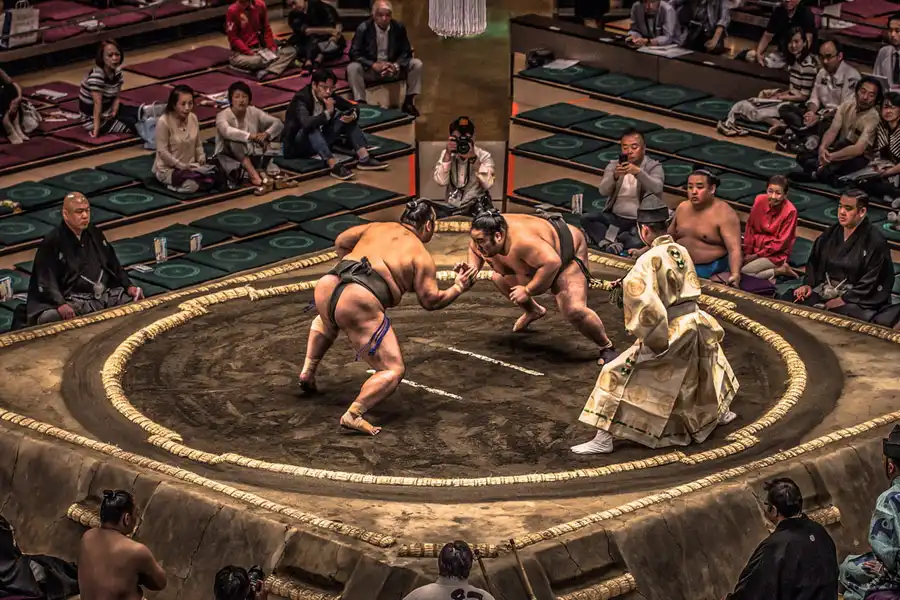 Delicious Cuisine: Japanese food is loved globally. Sushi, ramen, tempura, and sashimi are just a few examples of the delicious dishes that originate from Japan.
Delicious Cuisine: Japanese food is loved globally. Sushi, ramen, tempura, and sashimi are just a few examples of the delicious dishes that originate from Japan.
 Politeness and Respect: Japanese culture places a high value on politeness and respect. Bowing is a common greeting, and there are many customs related to showing respect to others.
Politeness and Respect: Japanese culture places a high value on politeness and respect. Bowing is a common greeting, and there are many customs related to showing respect to others.
 Anime and Manga: Japan is the birthplace of anime and manga, which are popular forms of entertainment enjoyed by people of all ages around the world.
Anime and Manga: Japan is the birthplace of anime and manga, which are popular forms of entertainment enjoyed by people of all ages around the world.

Conclusion: Japan, the “Land of the Rising Sun,” is a country with a rich history, vibrant culture, and beautiful landscapes. Its nickname is a reflection of its geographical position, historical significance, and cultural heritage. From the stunning sunrise over Mount Fuji to the ancient myths of the sun goddess Amaterasu, Japan’s connection to the rising sun is a fascinating story that continues to inspire people around the world.
Friday, September 27, 2024
GREATEST PACE BOWLER OF INDIA
Kapil Dev
Dev made his debut in first-class cricket playing for his state, Haryana. He joined the Indian national team for a 1978–79 Test series against Pakistan. Although his tally of seven wickets over three matches in a losing effort was not the most spectacular of debuts, Dev played with great energy, possessing an impressive outswinger delivery and an aggressiveness that Indian cricket had not seen in a long while. In fact, Dev was India’s first genuine fast bowler, and he went on to lead the country’s bowling attack for the next two decades. He ended his Test career with a record 434 wickets in 131 Test matches (a record that was broken in 2000 by Jamaica’s Courtney Walsh), including 23 five-wicket matches. In one-day internationals, he took 253 wickets over 225 games.
Dev also made a mark as a hard-hitting middle-order batsman. In a 1978–79 Test series against the West Indies, he not only took seven wickets in the fourth Test but also scored 126 runs in the fifth Test to help India win the series. His attacking game, peppered often with huge boundaries (hits that cross the boundary of the field), helped him score 5,248 runs in 131 Tests (including eight centuries [100 runs in a single innings]) and 3,783 runs in 225 one-day internationals (with one century).
Dev was made the captain of the Indian national team in 1983. As a leader, he downplayed strategy and led by example. This was best seen in the 1983 Prudential Cup, when he almost single-handedly helped India defeat Zimbabwe with a 175 not out (his 175 runs were a career high). However, inconsistent performances led to his being relieved of the captaincy soon after the victory. He was even dropped from the side briefly in 1984. Nevertheless, Dev played several match-winning innings for India. The most famous of these include his “5 for 28” (taking five wickets while conceding only 28 runs) against Australia to give India victory in the 1981 Melbourne Test; taking nine wickets against the West Indies in 1983; scoring 119 off of 138 balls to save India from a Test defeat against Australia in 1986; and slamming four consecutive sixes (balls that pass the boundary without ever touching the playing field) against England in 1990. He became only the second player in cricket history to claim 400 wickets, and in 1994 he broke Richard Hadlee’s record of 431 wickets.
Dev retired in 1994 and had a brief but unsuccessful 10-month spell as the coach of the Indian national team from October 1999 to August 2000. In 1999 he was implicated in a match-fixing controversy that led to his coaching departure, but he was later cleared of all charges after an investigation conducted by India’s Central Bureau of Investigation. He was chairman of India’s National Cricket Academy from 2006 to 2007 but was forced out when he became an executive in the privately funded upstart India Cricket League (ICL). He left the ICL in 2012 and returned to the good graces of the Board of Control for Cricket in India (BCCI), the national governing body of Indian cricket. Kapil Dev was the greatest pace bowler India has produced, and their greatest fast-bowling allrounder. If he had played at any other time - not when Imran Khan, Ian Botham and Richard Hadlee were contemporaries - he would surely have been recognised as the best allrounder in the world. In any case he did enough to be voted India’s Cricketer of the Century during 2002, ahead of Sunil Gavaskar and Sachin Tendulkar. His greatest feats were to lead India almost jauntily, and by his all-round example, to the 1983 World Cup, and to take the world-record aggregate of Test wickets from Hadlee. It was the stamina of the marathon runner that took him finally to 431 wickets and only a yard beyond.
He might not have been quite the bowling equal of Imran, Hadlee or Botham at his best, and his strike rate was less than four wickets per Test, but he was still outstanding in his accuracy and ability to swing the ball, usually away from right-handers. And he could hit a ball even more brilliantly than he bowled it, with uncomplicated flair.
Kapil had a rather ordinary stint as India’s coach for 10 months between October 1999 and August 2000. At the height of the match-fixing allegation by Manoj Prabhakar - a charge that was subsequently dismissed - Kapil resigned as coach. Hurt by the betting controversy, he announced that he was leaving the game. However, he returned from a significantly quiet period when Wisden named him their Indian Cricketer of the Century. He won, and then returned to cricket as a bowling consultant and served as chairman of National Cricket Academy for two years. In May 2007, Kapil joined the breakaway Indian Cricket League, which led to his removal from the NCA.
Thursday, September 26, 2024
GLOBAL ECHOES OF FREEDOM
Wednesday, September 25, 2024
YODELING
Yodel-ay-hee-whoo
When most people think about Switzerland, they think of Swiss cheese, Swiss Army knives, tall Alpine mountains, and yodeling. Most of us have seen at least one movie or television show in which someone in a traditional Swiss outfit stands on a mountainside and calls, “Yodel-ay-hee-whoo!” Maybe you’ve even watched an old Tarzan movie in which Tarzan swings through the trees and yodels his famous cry. But just what is this strange noise, what is it for, and how did it get started?
Yodeling has been used as a means of communications in mountainous regions for centuries. While yodeling is most often associated with Switzerland, it actually originated in the 4th century BC. A Roman emperor named Julian complained about the “wild, shrieking songs” of people who lived in the northern mountains. Some people believe that yodeling may have started in Africa, probably as a way to call cattle and keep them together. In the 1200s, early shepherds in the Alpine region that includes modern day Switzerland discovered that they could alternate their voices between a regular singing voice and a falsetto (a singing voice that is unusually or unnaturally high) voice, and began using it to call their cows and communicate with each other across large areas. This kind of singing became known as yodeling in English, from the German word jodeln, which means “to utter the syllable jo” (pronounced “yo” in English).
It didn’t take long for yodeling to move from a folk tradition to a type of entertainment. By 1830, it was a popular act in theaters and music halls. It was also included in many Austrian and Swiss folk songs. In the United States, some of the traveling minstrels in the 19th century performed yodeling. In 1892, inventor Thomas Edison made a recording of yodeler L. W. Lipp for Edison’s New Jersey Phonograph Company. Singers began using yodeling in other forms of music, such as blues and country. Folk singer Jimmie Rodgers released a recording called “Blue Yodel No. 1.” He eventually recorded 13 blue yodel songs, which blended yodeling with African American blues and work songs. Rodgers’ recording created yodeling craze in the United States. Singing cowboys and cowgirls also began using yodeling in their acts.
How do singers yodel? They do it by rapidly shifting from their regular chest singing voice to their falsetto head voice, at high volume. They might be shifting several times in just a few seconds. Yodelers use the consonants AH, OH, OO for chest notes and AY or EE for the falsetto, so in the famous yodel “Yodel Ay EEE Oooo,” the EEE is sung in the high head voice and the rest in the chest voice. It takes time and training for singers to learn how to move so quickly between the two voice levels.
Yodeling has found its way into a lot of modern music as well, including punk and contemporary rock. Singer Jewel yodels in her song “Chime Bells.” Her father, who in turn learned from listening to Jimmie Rodgers’ recordings, taught her to yodel. Gwen Stefani yodels in her 2006 single “Wind It Up.” Other famous yodelers include the Muppets, Bill Murray, Julie Andrews in the movie The Sound of Music, Shakira, Gene Wilder, Disney’s Goofy, and South Korea’s former Miss World, Ji-Yea Park. Kishore Kumar was a famous Indian singer and actor who was known for his yodeling.
Many people are trying yodeling, especially because it is said to help relieve stress. Listen to some yodeling performances (there are many on YouTube), then find a mountaintop, or at least some place where you won’t bother anyone, and give it a try. Maybe yodeling will be an easier way to communicate with your friends than texting or emailing…or maybe not.
Tuesday, September 24, 2024
WORDS WORTH READING
Attitude Is Everything
Once, there were three bricklayers. Each one of them was asked what they were doing. The first man answered gruffly, “I’m laying bricks.”
The second man replied, “I’m putting up a wall.”
But the third said enthusiastically, and with pride, “I’m building a cathedral!”
It is said, “Our attitude towards life, determines life’s attitude towards us.” A good attitude is the start to a good future, and, a lot of success.
Our attitude towards whatever we are doing, decides our ultimate level of success. Being able to see the end result, rather than just the task, eliminates obstacles, focuses our energy, and provides us motivation to excel.
As you move ahead in life, during and after studies, please keep in mind that having a positive attitude, brings about many wonderful opportunities. In class, and at work. Apositive attitude may not necessarily solve all our problems. But it is the best option we have to get out of problems.
Positive thinking has the power, to turn a hard day into a manageable one, and a good day into an even better one. Once you replace negative thoughts with positive ones, you’ll start having positive results.
You’ll be braver than you believe, stronger than you seem, and smarter than you think. Keep in mind that pessimism leads to weakness and optimism to strength.Therefore, shape your attitudes accordingly.
Monday, September 23, 2024
HISTORY BEHIND
Sunday, September 22, 2024
NOT AN EASY JOB
Making a cricket bat
Cricket bat making is an art and we come across different makes of bats in International cricket. The sound of the timer and the way balls soared over the boundary is a treat to watch. But bat making is not an easy job and it undergoes many processes before taking the shape of a cricket bat.
A cricket bat is a specialized piece of equipment used by batsmen in the sport of cricket to hit the ball, typically consisting of a cane handle attached to a flat-fronted willow-wood blade. The length of the bat may be no more than 38 inches (965 mm) and the width no more than 4.25 inches (108 mm). Its use is first mentioned in 1624. Since 1979, a rule change stipulated that bats can only be made from wood. Dennis Lillee used an aluminum bat and that was banned for use in cricket matches. Matthew Hayden used a Mongoose bat during an IPL match and that was not in use thereafter.
Cricket bat willow is a cultivated timber which predominantly grows in large plantations in wetland areas throughout England mainly in the South East. The trees are mature between the age of 12-15 years and at this stage have a circumference of over 4ft. The bulk of the Woodstock willow comes from willow specialists but each cleft is still selected by lead bat maker, John Newsome, individually. The cleft has already been split from the round using a wooden wedge, rough sawn and the ends waxed to stop splitting. The process of seasoning in the open air takes place to reduce moisture content and this takes between nine months and a year. When ready to be turned into bats the ends are cut and they pass through a five cutter milling machine to give the cleft a uniform shape.
The seasoning of the willow at various seasons is exposed to various conditions. The bats are exposed to sun rays, rain and snowfall and the wear and tear on these weather conditions makes the bat more seasoned and fit for use for making bats. The age of these willows are picked according to their age to make it a suitable one for the process of bat making. Both Kashmir willow and English willow are cut to size of bat and kept for exposure to weather and later the bat making process is undergone to make a balanced bat.
Each bat handle is spliced and fitted using a flexible wood glue making sure it is set slightly forward to ensure the perfect line of the bow. The handle is then gently tapped into place and left to dry in an upright position. Once the bat has been shaped and blended the sanding process begins. This is a time consuming process that uses several grades of paper working to a fine finish. Finally brush sanders are used to give a beautiful smooth finish. The stickers are then affixed to make it colourful and to provide the bat name of the Indian made bats are exported to other countries. An exclusive bat made in India is not available for sale in India but you can get the same across the sea when you visit Sri Lanka. In Srinagar and surrounding areas cricket bats are available on the streets and you can pick up the best piece at a cheaper price without stickers but you can buy from outside and stick on as per your own liking.
The art of making a cricket bat is lovely to watch and the youngsters should avail a chance to go through the quality of wood, a few craftsmen with serious skills, computer assisted design, and large machines in factories, which provide all about a cricket bat. A firm grip with different colours and design decorate your bat very much and show a classic look. The curve given to the bat is of advantage and attracts classy batsmen of the modern era. Once the bats get final shape then it is ready for labelling, gripping and knocking in.
Every bat also receives a final check-over to ensure that it has been finished to a high standard and that there are no previously unspotted imperfections. The present day bats provide you the feather touch if the shot is played from the middle of the bat with perfect timing. There lies the real pleasure of playing with a perfect bat.
Saturday, September 21, 2024
DO YOU KNOW
What causes albinism?
Albinism occurs if there is little or no melanin pigment in the body.
How is melanin produced in the body?
The skin has special cells called melanocytes. These cells start to produce melanin when stimulated. After the production is completed, melanin is sent to the melanosome. The melanosomes transport melanin to the skin. The more melanin is produced, the darker the skin gets.
Melanin is produced especially on sunny days because it absorbs harmful rays of the sun and protects the body. That's why we tan when the weather is sunny.
As people with albinism cannot produce melanin, they don't tan but they become red. They pay attention to the clothes they wear and use sunscreen to protect their skin.
The primary effect of the melanin deficiency can be seen in the eyes. Albinism causes many eye problems. These problems include crossed eyes, light sensitivity, blurred vision and involuntary eye movements.
Light sensitivity occurs as follows: The iris, the colored structure in the eye, shrinks when there is too much light and gets bigger when there is less light. The retina absorbs the excess light coming into the eye. The iris of people with albinism cannot shrink when there is too much light and more light enters the eye. The retina cannot absorb all of the light and as a result, light sensitivity occurs.
The eyes of people with albinism look red. It doesn't mean that they have red eyes! It is the reflection of the vessels in their eyes.
All organs of the people with albinism are healthy except the vision center of their brain.
Some animals only have melanin pigment in their skin. Others have different pigments besides melanin. Lack of melanin causes albinism in animals too.
Animals with albinism have white skin, hair and feathers. Unfortunately, the technology for people with albinism is not applicable for animals in nature. It is difficult for them to camouflage themselves because their skin is white.
For example, when crocodiles with albinism are born, they attract predators' attention and they are easily hunted.
It is believed that squirrels with albinism have the most comfortable life compared to other animals with albinism. This is because they move very quickly and hide between the trees!
Can plants have albinism? They can! The pigment named chlorophyll makes the plants green. The lack or absence of chlorophyll pigment in plants causes albinism. Plants that we are used to seeing green appear white.
Plants make their own food thanks to the chlorophyll. You may wonder about the relevance of food to our subject. Plants with albinism cannot make food without chlorophyll. For this reason, it's difficult for them to live. But plants help each other. They transfer food to other plants in need of food through their roots. Plants with albinism hold on to life in this way.
The best examples of them are redwoods. They reach a maximum height of about 20 meters. The location of many of them are kept secret because they are under protection.
Friday, September 20, 2024
HIDDEN BENEFITS OF COMPETITIONS
Do you know
WHAT IS THE DIFFERENCE BETWEEN WAVE ENERGY AND TIDAL ENERGY The oceans cover more than 70% of Earth’s surface and are constantly in motion....

-
ANNABELLE The real Annabelle doll is a well-known case of alleged paranormal activity, made famous by Ed and Lorraine Warren, two well-know...
-
WHY IS SUGAR WATER STICKY? Sugar water is sticky because sugar molecules have a strong affinity for water molecules, forming hydrogen bonds ...
-
What is Retro walking? Retro walking is backward walking, usually done as a form of exercise. It is claimed that 100 steps of backwar...























